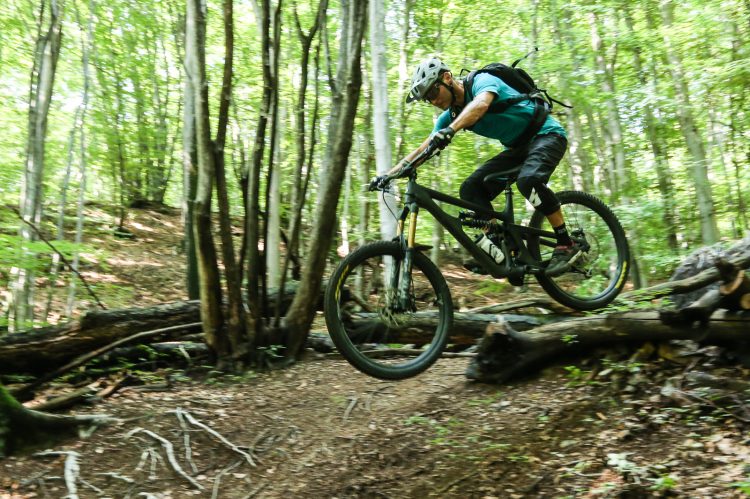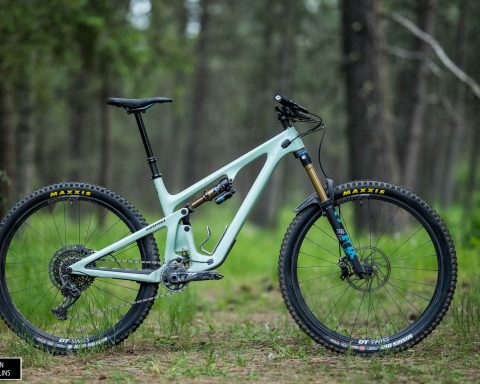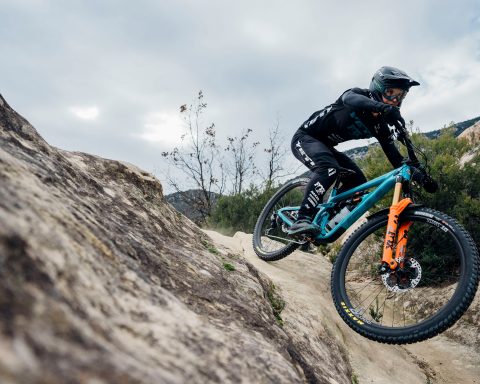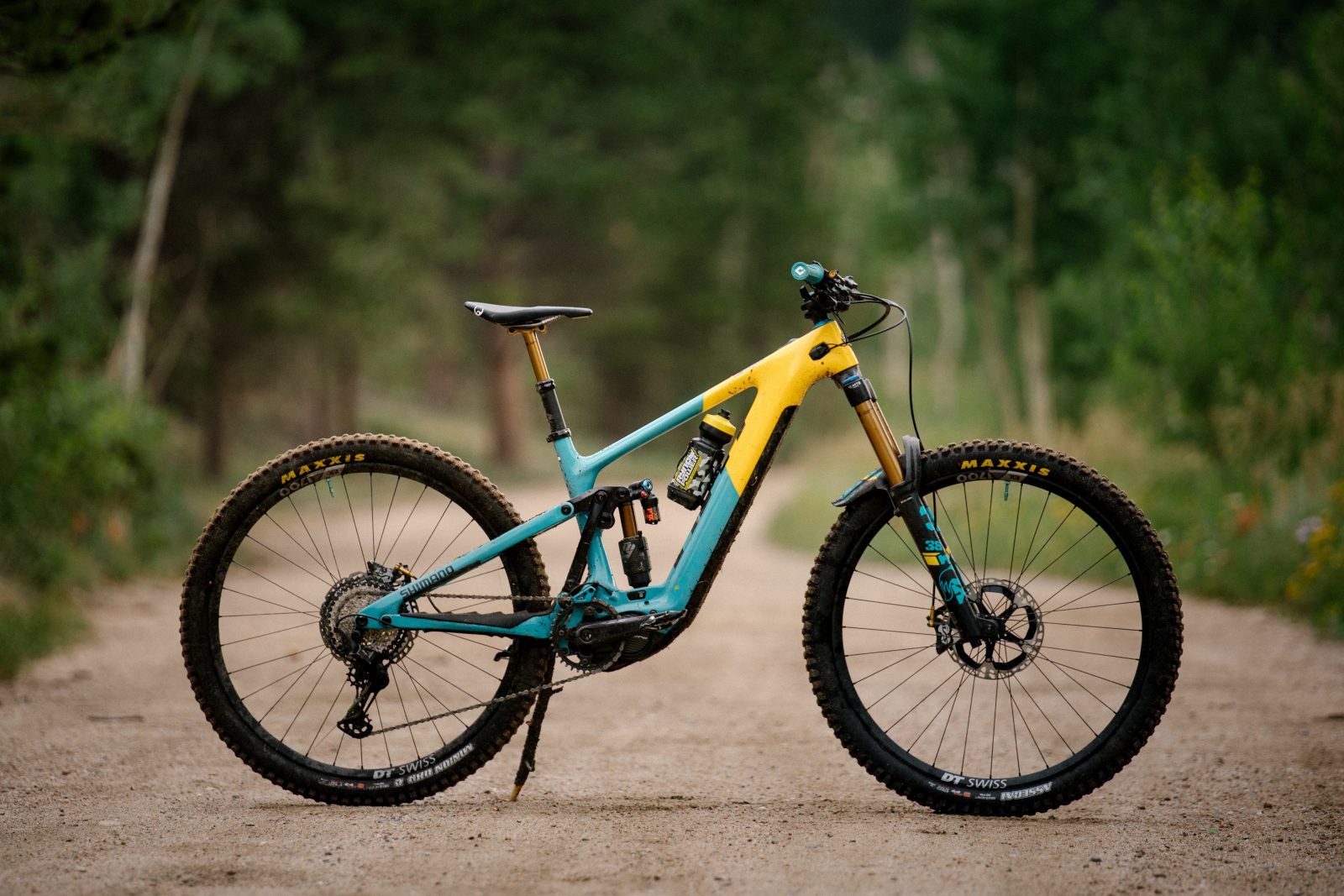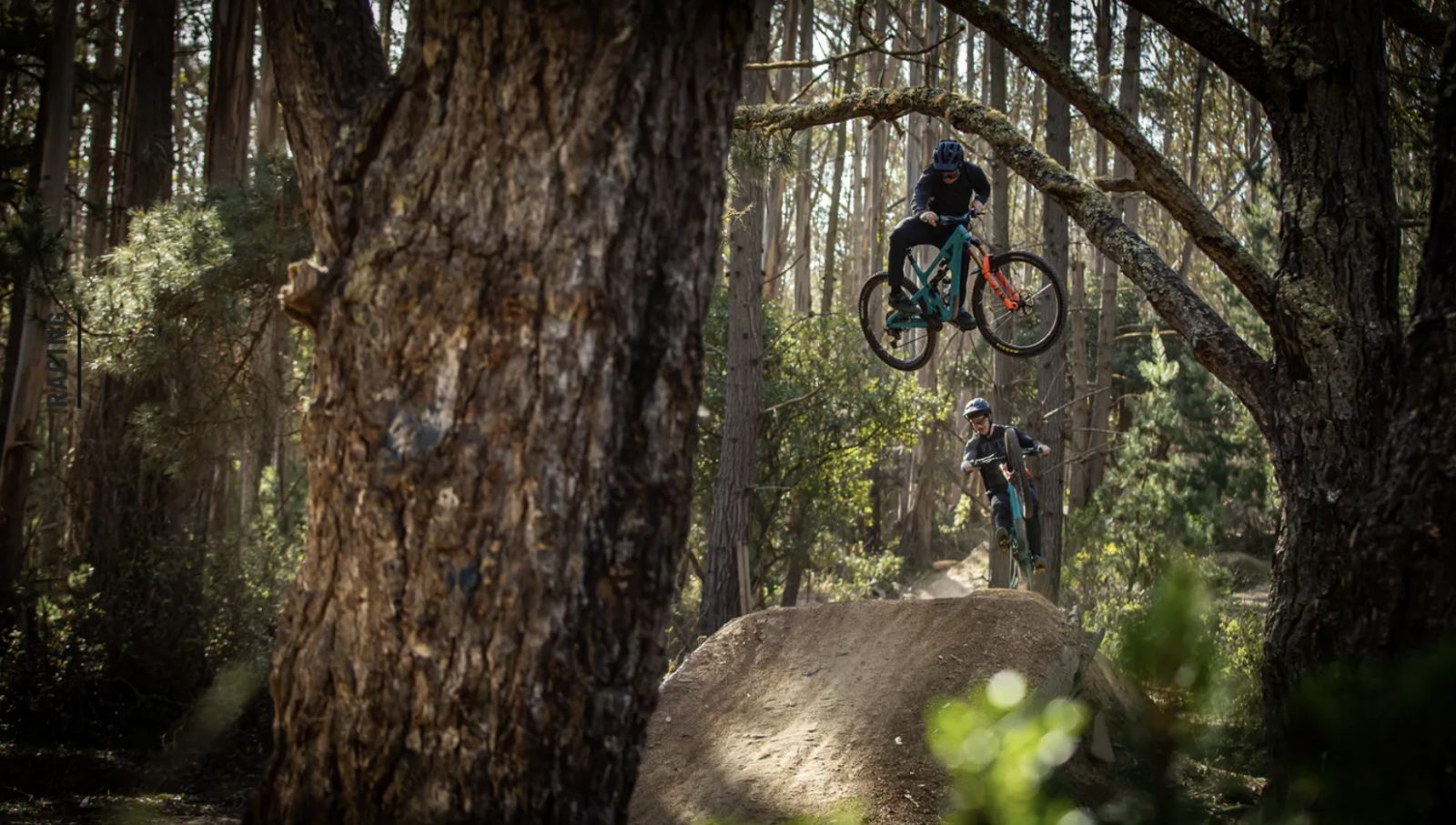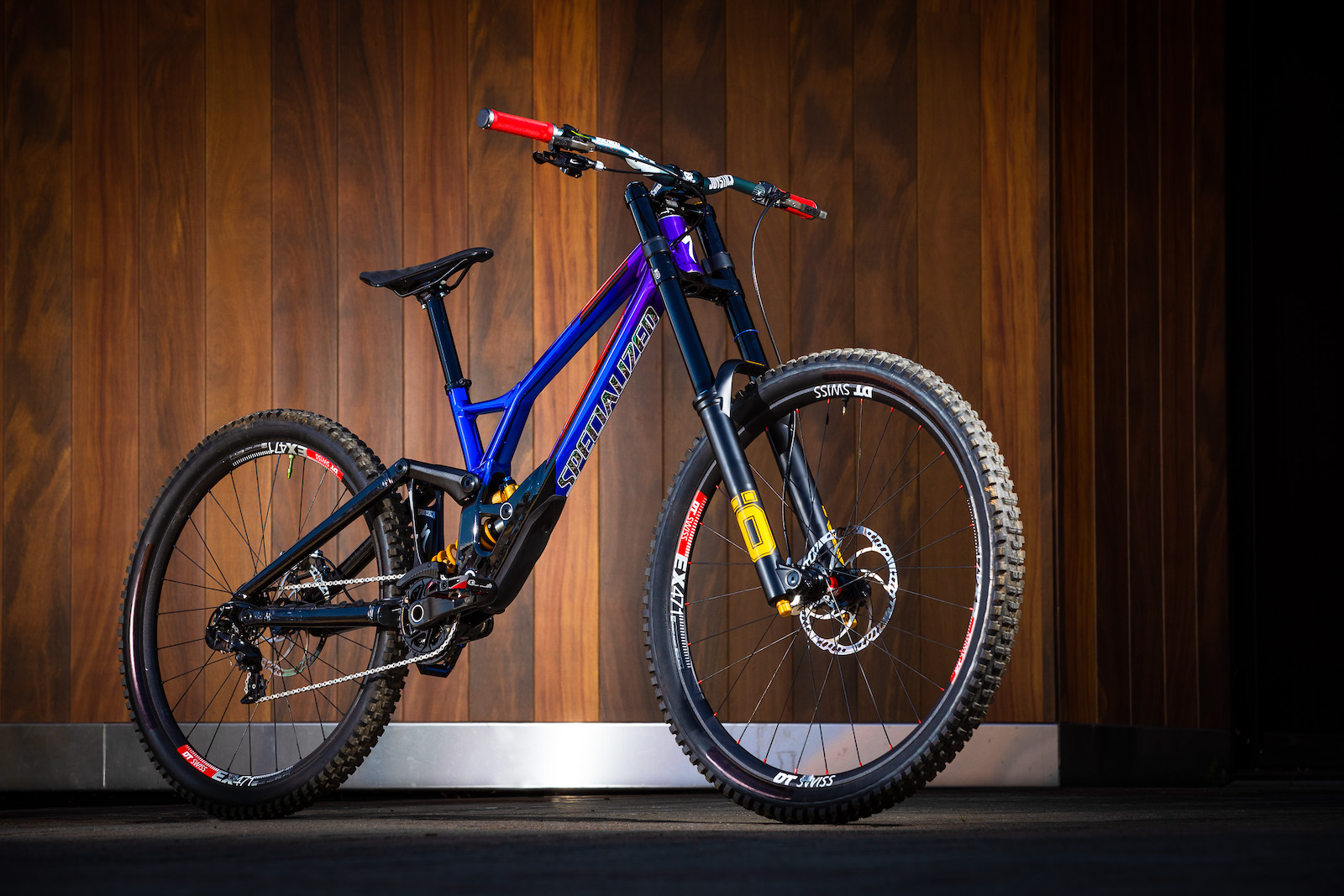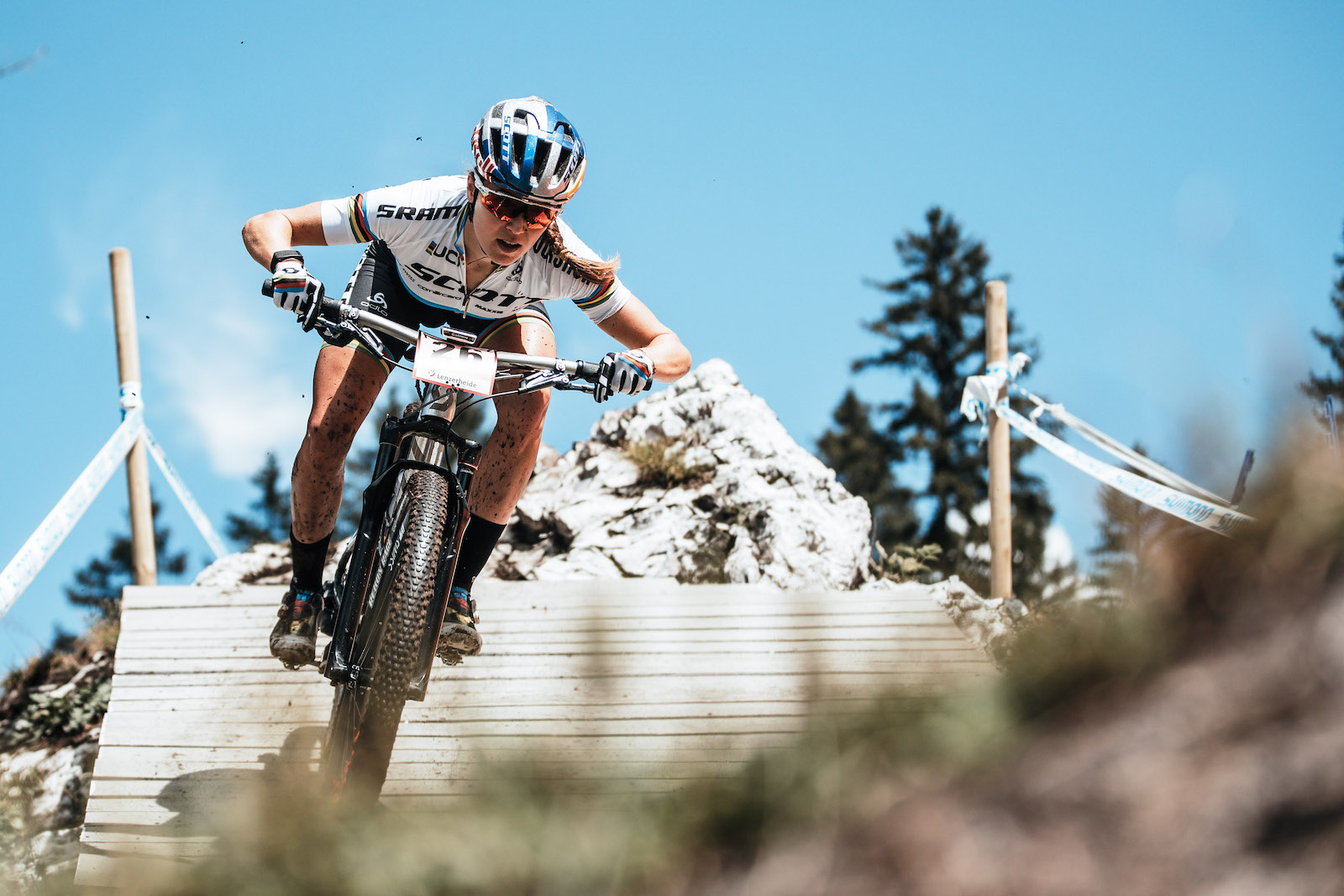Presented in mid-July, the YetiSB165 has generated a lot of interest because it goes beyond the concept of enduro and edges closer toward the freeride segment – a word almost forgotten these days. Despite its being long in travel, this bike pedals very well uphill. Not only that, Yeti has gone against the tide by choosing the 27.5″ wheel format, which has been losing popularity for some time now. A rather peculiar bike, with extreme geometry and with a progression curve specifically meant to accommodate a coil sprung rear shock, with which it is sold as standard.
After trying it for a day on the Matadown (Italy), the Italian Distributor sent me the exact same model to be able to ride on the home trails that I know well. I rode a size large, with a T2 spec which retails for 8,699 Euro. It is also worthwhile to say that I received the frame to be to be built from the ground up, and that the process was very fast thanks to some tricks that will make the mechanics happy and those who will buy the frame alone. First of all regarding the internal cable routing, then a door under the bottom bracket is fixed with two screws and designed to be removed when the dropper post remote cable has to pass through. Given the intricate shape of the frame in the area around the Switch Infinity, it would otherwise be almost impossible to get the housing through.
Since I wrote a special article with all the details of the SB165, I’ll refer you to this link for geometry, details, specs, prices and a presentation made by the Yeti engineers themselves. Here I’ll deal exclusively with the on trail test.
Weight measured without pedals: 14.63 kg.
Tester height: 179cm
Horse: 74cm (bottom-saddle)
Size: Large
In theory I would have been fine on a Medium, but I found myself extremely happy with the size Large due to the combination of long reach and a vertical seat angle. My weight is central on the bike and I can maneuver it with ease, with the advantage of high stability on the fast sections. I recommend to anyone who wants to buy it to do at least a short ride first to understand what I’m talking about. You will not find yourself overwhelmed by a long top tube, so don’t over analyze it purely from the reach values.
On the trail
Several people contacted me after reading the presentation of the SB165, asking me what I thought. Since a couple of them ride on the trails here in my area, I honestly said it’s not a bike designed for classic alpine tours, with so much pedaling uphill. I pedaled up to 1000 vertical meters with this Yeti, but that was certainly not the time when I enjoyed it the most. On the other hand the geometry says a lot about the intended area of use, that is on the descents.
In any case, the Switch Infinity turns out to be a nice suspension system here too, because I almost never used the rear shock lockout lever, even on asphalt, thanks to its neutrality in pedaling. The rear end moves very little, despite the great sensitivity of the DHX2. And when it is closed, the remaining traction is excellent and lends itself well to technical trails, helped by the 77 ° saddle angle. Here, however, there is also the limit of a bike with a 180 mm travel fork and a 63.5 ° steering angle: steep pitches or tight turns uphill are difficult to navigate in the saddle, without even considering the lower traction of the 27.5″ wheels. All this should not come as a surprise to anyone who understands much about mountain bikes, but it is worth emphasizing.
As for weight, you can grind a few grams by buying the orange spring for DHX2. Yeti has expressly said that the black version is heavier because it would be a shame to have to swap out the more expensive one at the time of purchase, as every rider will have to find the right one depending on his body weight.
Technical descending
This is probably where I liked the SB165 the most. First of all it gave me enormous confidence on the technical and exposed sections that I can only do when I get up on the right side of the bed, despite its 27.5″ wheels. There is a stretch in the first part of the descent of Monte Tamaro with a passage on the rocks with a hole closed as best as possible by some stones, on the right one falls down about a meter on the actual path, and then eventually roll into the ravine which opens immediately next to it. On the Yeti, I did it easily, remaining quite surprised at myself.
Despite the “low and slack” geometry I never had the feeling of being on a plow that was difficult to turn. The 27.5″ wheels help you throw it around nicely, assuming you keep your weight well forward, and here we go back to the discussion I mentioned in the” uphill “chapter. It is not a classic enduro all-rounder, because it requires a very active riding style that is accustomed to modern geometry, almost to exasperation. The punishment for being too far off the back is looping out in the corners.
The suspension department leaves nothing to be desired. The coil sprung rear shock absorbs everything without blinking and helps keep the bike calm and easy to control in any situation. The downside is that it requires more energy to be able to pump it over obstacles. With 180mm of travel, the fork is monstrous, and it is practically impossible to bring it to the end of its travel. The SB165 very much liked the steeps, because the position on the handlebar (from 800mm of width) is high enough to not have that feeling of going over when it meets steep after steep, with G-outs in between. I only put a 5mm spacer under the handlebar.
I liked the behavior of the rear end as it does not tend to get bogged down, which tends to happen easily when a coil shock is fitted, given its linearity and the tendency of the kinematics to be more linear, if not regressive, at the beginning travel, to be able to absorb small bumps. This feature gives life to the bike, which is not easy given the long travel on offer.
The SRAM Code RSC braking system with 200mm discs did not disappoint me, even on long and demanding descents where it would have been easy to overheat. Like all SRAM systems, the burning-in of the pads is essential to prevent them from becoming glazed over and losing power.
Fast descents
I spent a few days in Livigno in the bike park to try the Yeti SB615 on the faster trails, with berms and jumps. Here it is even more important to talk about loading the front end, given the speed. Its agility is particularly appreciated in turns in sequence, while the sensitivity of the suspension makes one almost forget the braking bumps.
Coming up short on the jumps is not a big problem, the bike does not bottom out easily. When you hit berms hard enough to get a deep compression (which is fun), you can feel how stiff the frame is – it responds to every impulse from the rider. Let’s just say the smooth trails get boring quickly, and it’s on the more technical ones where you’ll have more fun.
The combination of the Minion DHF and DHR EXO1 with the DT Swiss EX1700 30mm inner diameter rims proved to be robust and very reliable. In four weeks of testing, I didn’t puncture once and the rims didn’t ding, despite some un<healthy run ins on the rocks.
Negatives
I had no particular problems, as the chassis and components worked perfectly. To those who buy a frame in this price range, I’d highly recommend putting a protective film under the down tube, because the rocks flung from the front wheel tend to leave their mark on the paint (they are the dots in the picture below).
Overall
The SB165 is a bike with geometry and extreme travel that goes beyond the concept of enduro and is closer to an actual freeride bike. It lets you ride, calmly, uphill, but is designed to make riders happy who love technical, fast and difficult descents, possibly served at least in part by chairlifts and shuttles. For all the other disciplines Yeti has a range of more all-rounders that are suitable within their respective categories.




